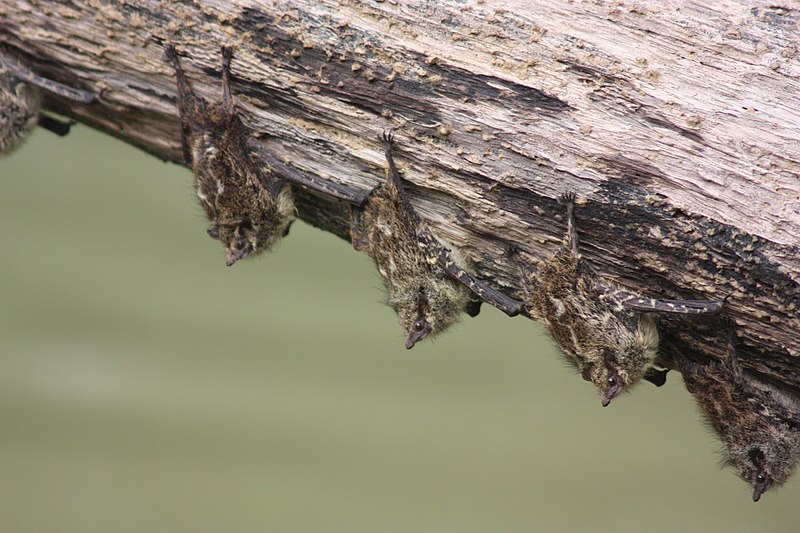The best way to remove bats from your house involves identifying entry points, using humane exclusion methods, and preventing re-entry. Professional help may be necessary for large infestations.
Key Takeaways
- Identify common signs of bat infestation.
- Understand humane and safe removal methods.
- Learn prevention tips to avoid future bat problems.
- Know when to call professional bat removal services.
You’re relaxing in your living room when suddenly, a bat swoops down, causing chaos. Yikes! Dealing with bats in the house can be stressful. But don’t worry, you’re not alone. Bats finding their way into homes is more common than you might think, and the good news is there are effective and humane ways to handle the situation.
At AAAC Wildlife Removal, we’ve seen it all and we’re here to help. So, what should you do when you find yourself face-to-face with these nocturnal visitors? Let’s dive into practical steps on how to safely and humanely remove bats from your home, ensuring both your peace of mind and the well-being of our winged friends.
Why Do Bats Enter Homes?

Understanding Their Motives
Bats are fascinating creatures, but you probably prefer them not to be your uninvited house guests. So, why do they choose to set up shop in your home? There are a few reasons why bats might find your house appealing:
Warmth and Shelter: As nocturnal creatures, bats need a safe and warm place to roost during the day. Your attic or chimney might seem like the perfect hideaway, offering protection from predators and the elements.
Food Sources: Bats are insectivores, meaning they feast on insects. If your home has a high insect population, it might be an attractive food source for bats.
Nesting: Some bat species are known to return to the same roosting spots year after year. If they’ve nested in your home before, they might come back out of habit or preference.
Easy Access: Homes with multiple entry points like vents, chimneys, or gaps in the roofing are more likely to become bat havens. These small openings are perfect for bats to squeeze through and find a cozy spot inside.
Understanding why bats enter homes is the first step in preventing future invasions. Now, let’s move on to how you can humanely and safely remove them.
Humane and Safe Bat Removal Methods
Humane Ways to Remove Bats
Removing bats from your house doesn’t have to be a traumatic experience—for you or the bats. Here are some humane and safe methods to ensure a bat-free home:
Identify Entry Points: Before you can remove bats, you need to know how they’re getting in. Common entry points include chimneys, vents, and gaps in roofing. Conduct a thorough inspection to locate all potential entry points.
Use Exclusion Devices: One of the most effective and humane ways to remove bats is by using exclusion devices. These allow bats to leave but prevent them from re-entering. Install one-way exclusion doors or nets over the entry points. Bats will exit at dusk to feed and won’t be able to get back in.
Seal Entry Points: Once you’re sure all bats have left (usually after a few nights of using exclusion devices), it’s time to seal the entry points. Use caulk, mesh, or other appropriate materials to close off any gaps, holes, or cracks where bats could re-enter.
Avoid DIY Bat Removal: While it might be tempting to handle bat removal on your own, it can be risky and often ineffective. Bats can carry diseases, and improper handling can lead to bites or scratches. For larger infestations or if you’re unsure of the process, it’s best to call in professional bat removal services like AAAC Wildlife Removal. We ensure the job is done safely and humanely.
Safety Precautions: Always wear protective gear, such as gloves and a mask, when dealing with bats or cleaning up after them. Bat droppings (guano) can harbor harmful fungi that cause respiratory issues.
By following these steps, you can safely and humanely remove bats from your home, ensuring a bat-free environment without harming these important creatures.
Preventing Future Bat Infestations
Preventing future bat infestations is all about making your home as uninviting as possible for these winged visitors. Start by thoroughly inspecting your home for potential entry points. Bats can squeeze through tiny gaps, so it’s crucial to seal any cracks, holes, or openings around your roof, vents, and chimneys.
Use materials like caulk, steel wool, or mesh to close off these access points. Regular maintenance is key—make it a habit to check your home periodically for new gaps or damage that bats could exploit. Additionally, reducing attractants can help; ensure your attic is free of clutter and keep outdoor lights to a minimum, as lights attract insects, which in turn attract bats. By taking these proactive steps, you can significantly lower the chances of bats making your home their home.
When to Call in the Pros
While DIY methods can be effective for minor bat issues, there are times when professional help is necessary. If you’re dealing with a large infestation or bats in hard-to-reach places like high attics or deep within your walls, it’s best to call in experts like AAAC Wildlife Removal.
Professionals have the experience, tools, and knowledge to handle bat removal safely and humanely, ensuring that all bats are excluded and entry points are thoroughly sealed to prevent re-entry. Moreover, professionals can help clean up bat droppings (guano), which can pose health risks due to harmful fungi. Choosing a reputable bat removal service guarantees that the problem is addressed efficiently and effectively, giving you peace of mind and a bat-free home.
Legal and Ethical Considerations
When it comes to removing bats from your home, it’s not just about finding the most effective method; it’s also crucial to consider legal and ethical implications. Bats are protected by law in many regions due to their vital role in ecosystems as natural pest controllers. This means that harming bats or using inhumane methods for removal can result in hefty fines and legal troubles.
Ethical bat removal involves humane practices such as using exclusion devices that allow bats to leave without re-entering, rather than lethal methods. Additionally, certain times of the year, such as during the maternity season, it’s illegal to exclude bats as it can leave young bats trapped inside. Understanding and adhering to these regulations ensures that your bat removal efforts are both legal and humane, protecting both your home and the bat population.
Conclusion
Dealing with a bat infestation can be daunting, but with the right approach, you can safely and humanely remove these nocturnal visitors from your home. Start by identifying entry points and using exclusion devices to allow bats to leave without re-entering. Seal all potential entry points to prevent future infestations and keep your home well-maintained.
Remember, if the situation seems too challenging or if you’re dealing with a large number of bats, calling in professionals like AAAC Wildlife Removal is the best course of action. They have the expertise to handle the job effectively and humanely. By following these steps, you can ensure a bat-free home while respecting these important creatures and complying with legal requirements. Now, it’s time to take action and reclaim your space, ensuring peace of mind for you and safety for the bats.














